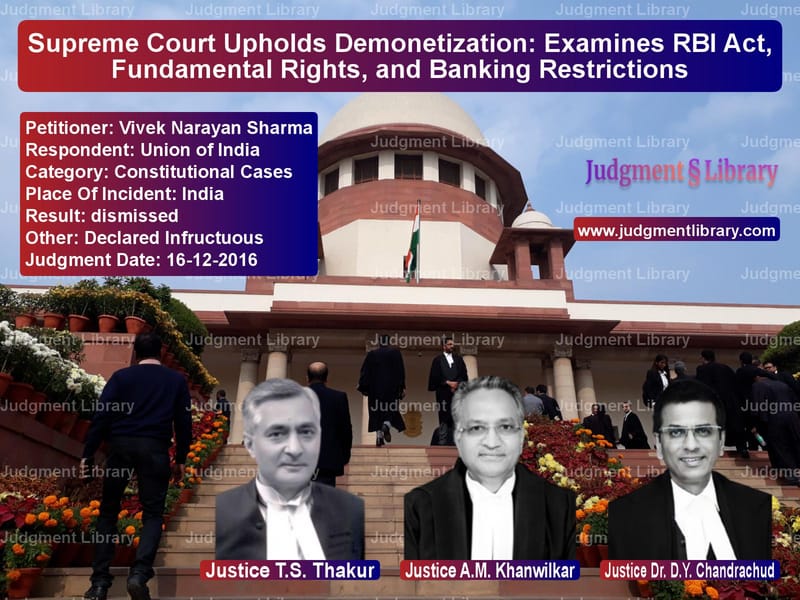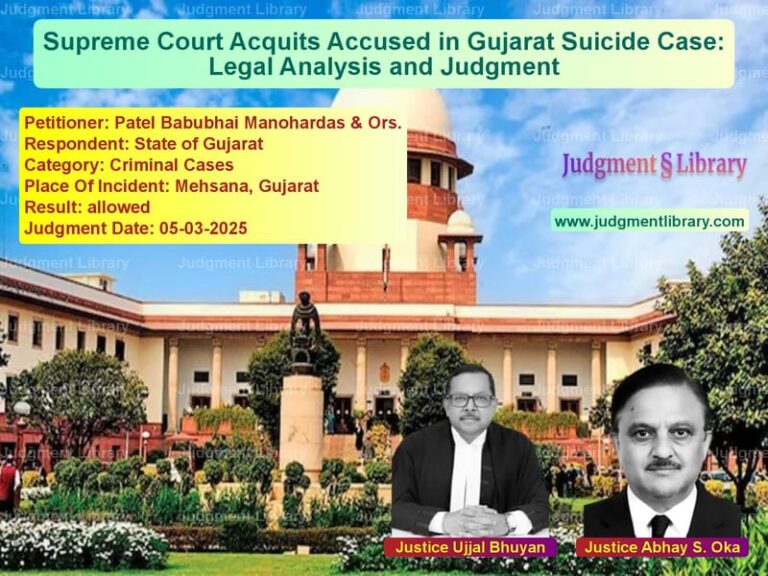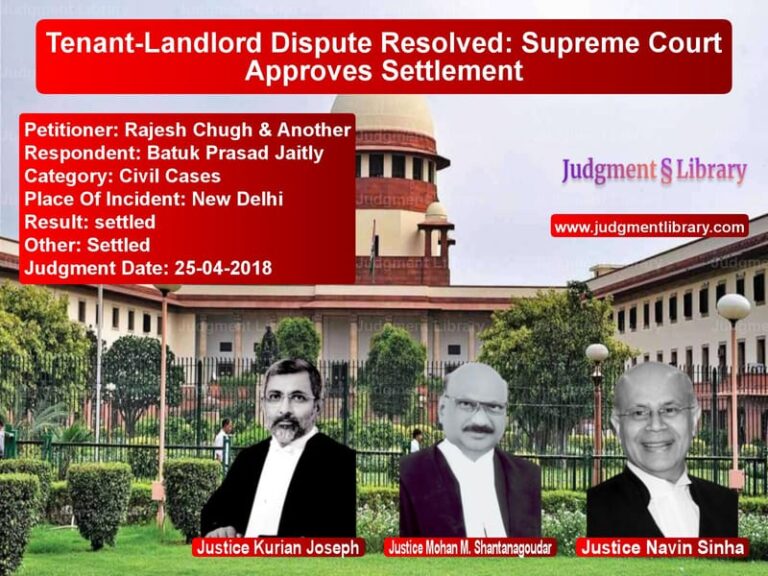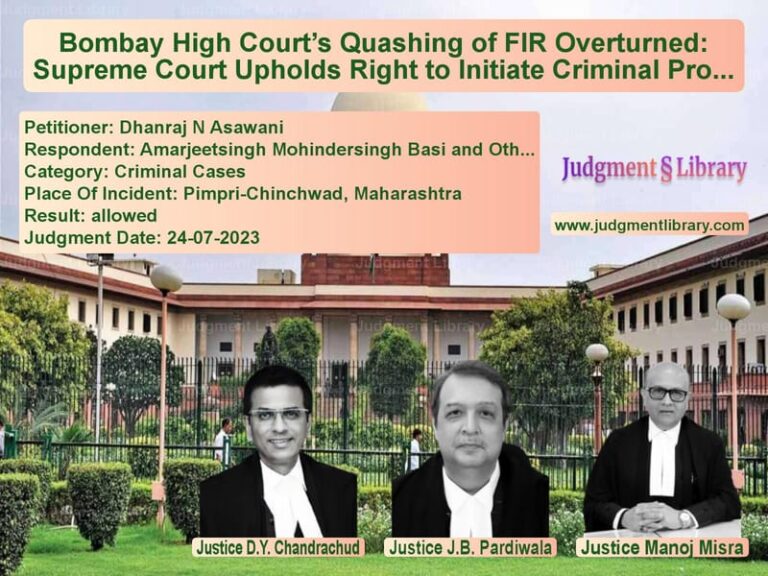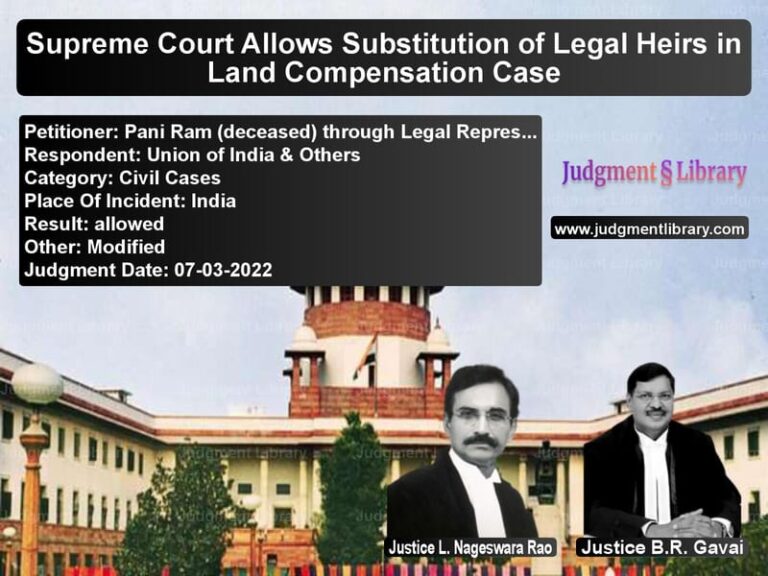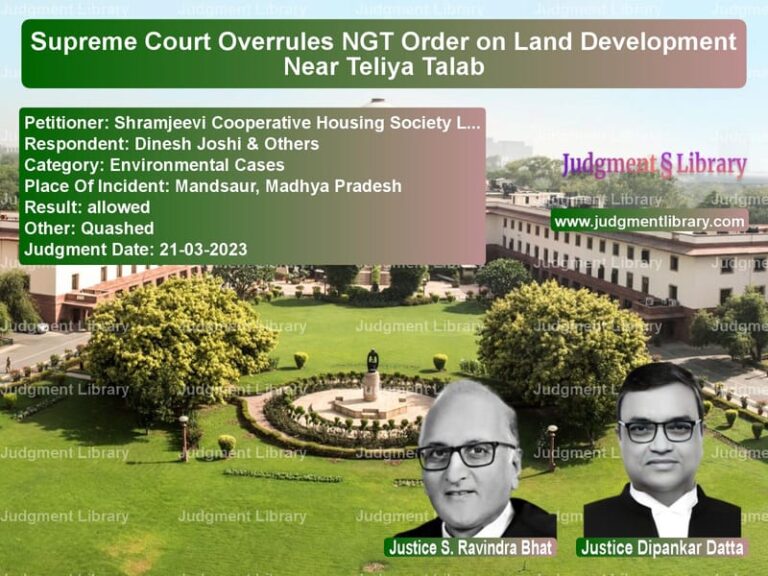Supreme Court Upholds Demonetization: Examines RBI Act, Fundamental Rights, and Banking Restrictions
The case of Vivek Narayan Sharma vs. Union of India involved a constitutional challenge to the demonetization policy announced by the Government of India on 8 November 2016. The Supreme Court examined whether the notification issued under Section 26(2) of the Reserve Bank of India Act, 1934 was legally valid and whether the restrictions on cash withdrawals violated fundamental rights. The Court upheld the demonetization decision but directed the government to ensure smoother implementation of withdrawal limits.
Background of the Case
On 8 November 2016, the Government of India announced the demonetization of ₹500 and ₹1,000 currency notes to curb black money, counterfeit currency, and terrorist financing. The decision, implemented through a notification under Section 26(2) of the RBI Act, 1934, rendered 86% of India’s currency invalid overnight.
Multiple petitions were filed in different High Courts and the Supreme Court, challenging the legality of demonetization and the restrictions placed on cash withdrawals. The Supreme Court clubbed all these petitions and transferred them to a five-judge Constitution Bench to examine the matter.
Key Legal Issues
- Was the notification dated 8 November 2016 ultra vires Section 26(2) of the RBI Act?
- Did the notification violate Article 300A of the Constitution (right to property)?
- Was the implementation of withdrawal limits arbitrary and in violation of Articles 14, 19, and 21?
- Did Section 26(2) of the RBI Act confer excessive legislative delegation to the Central Government?
- What was the scope of judicial review in matters of fiscal and economic policy?
- Was the exclusion of District Cooperative Banks from exchanging demonetized currency discriminatory?
Arguments by the Petitioners
- The notification exceeded the powers granted under Section 26(2) of the RBI Act, as it withdrew legal tender status for all citizens instead of select denominations.
- The restrictions on withdrawal of money deposited in bank accounts lacked statutory backing and violated Articles 14, 19, and 21 of the Constitution.
- The abrupt demonetization caused economic hardship, particularly for daily wage workers, small businesses, and rural populations.
- District Cooperative Banks were arbitrarily excluded from exchanging demonetized currency, which discriminated against rural customers.
Arguments by the Government
- Demonetization was a sovereign economic policy decision aimed at tackling black money and fake currency.
- Section 26(2) of the RBI Act provided ample power to the government to withdraw high-denomination notes from circulation.
- Withdrawal restrictions were temporary measures to manage liquidity and ensure an orderly transition to new currency.
- District Cooperative Banks were excluded from exchanging old notes due to concerns over money laundering.
Supreme Court’s Judgment
The Supreme Court upheld the validity of demonetization, ruling that:
- The notification was within the powers granted under Section 26(2) of the RBI Act.
- Article 300A was not violated since demonetization was a legal measure with reasonable justification.
- While withdrawal restrictions were legally permissible, the government was directed to ensure their smoother implementation.
- The exclusion of District Cooperative Banks was justified due to the need for stringent financial oversight.
The Court stated:
“Demonetization was a policy decision undertaken in the public interest, and judicial review in economic matters must be exercised with great caution.”
Impact of the Judgment
- It confirmed the Central Government’s authority to implement demonetization under the RBI Act.
- It reinforced the limited scope of judicial review in economic policy decisions.
- It highlighted the need for proper implementation mechanisms to minimize hardships for citizens.
- It set a precedent for future economic reforms requiring large-scale legal scrutiny.
Conclusion
The Supreme Court’s ruling affirmed the legality of demonetization while acknowledging the need for better implementation. The decision reinforces the principle that while economic policies are the prerogative of the government, they must be executed in a manner that minimizes public inconvenience.
Don’t miss out on the full details! Download the complete judgment in PDF format below and gain valuable insights instantly!
Download Judgment: Vivek Narayan Sharma vs Union of India Supreme Court of India Judgment Dated 16-12-2016.pdf
Direct Downlaod Judgment: Direct downlaod this Judgment
See all petitions in Fundamental Rights
See all petitions in Judgment by T.S. Thakur
See all petitions in Judgment by A M Khanwilkar
See all petitions in Judgment by Dhananjaya Y Chandrachud
See all petitions in dismissed
See all petitions in Declared Infructuous
See all petitions in supreme court of India judgments December 2016
See all petitions in 2016 judgments
See all posts in Constitutional Cases Category
See all allowed petitions in Constitutional Cases Category
See all Dismissed petitions in Constitutional Cases Category
See all partially allowed petitions in Constitutional Cases Category

